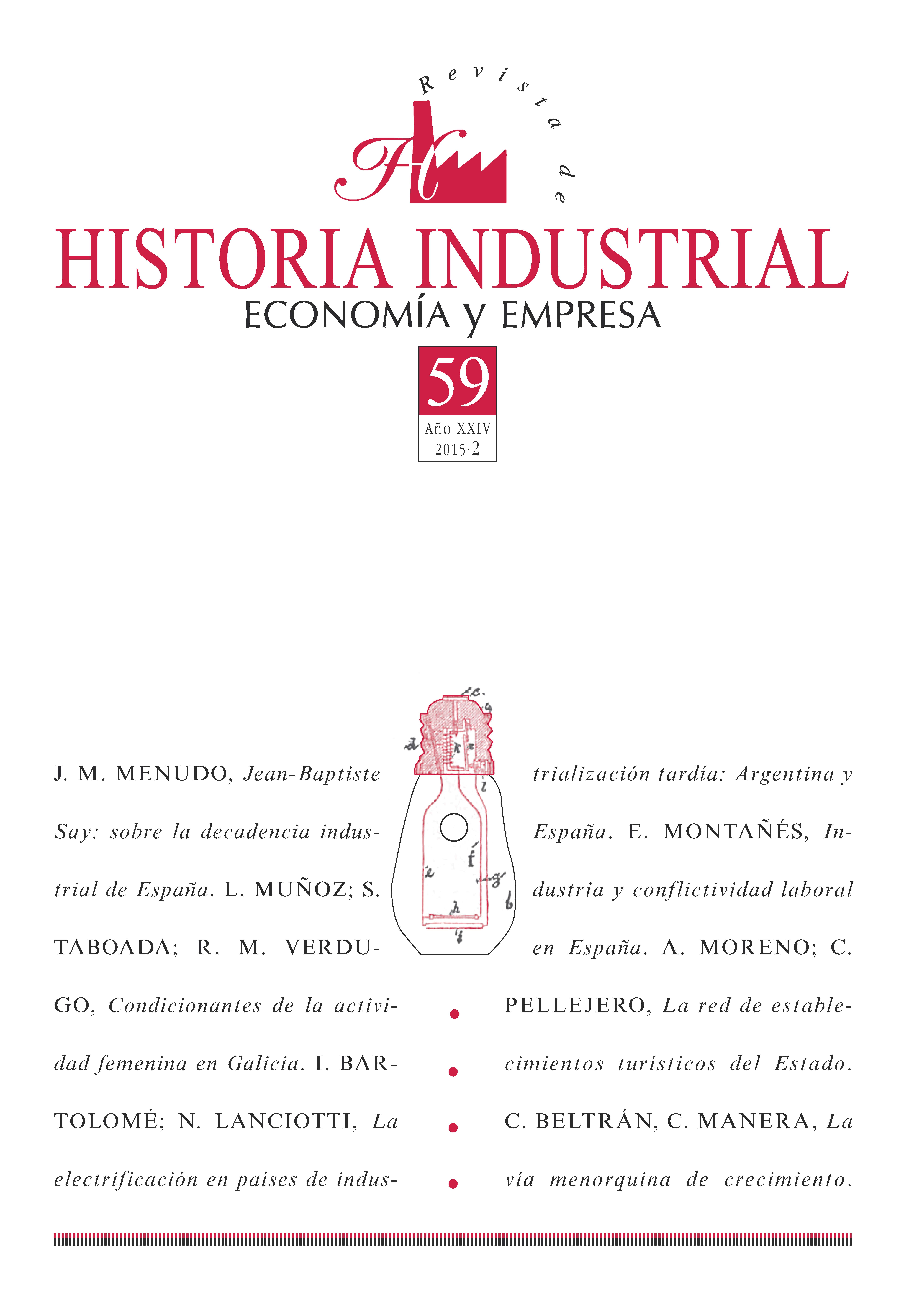La electrificación en países de industrialización tardía: Argentina y España, 1890-1950
DOI:
https://doi.org/10.1344/rhi.v24i59.21282Palabras clave:
Electrificación global, Hidroelectricidad, Argentina, EspañaResumen
El objetivo de este artículo es contribuir al análisis de los procesos de electrificación en los países de industrialización tardía, analizando las características, evolución y trayectoria de los sistemas eléctricos en España y Argentina desde la instalación de sus primeros servicios urbanos en el siglo xix hasta la nacionalización de los sistemas en la segunda posguerra mundial. La construcción, financiación y expansión de los sistemas eléctricos en los países occidentales fue un proceso tempranamente global que asumió características diferentes según el momento de industrialización y la modalidad de electrificación de cada región. La modalidad de expansión, el rendimiento y la cobertura de los sistemas muestran significativas diferencias en función de las condiciones económicas, la estructura de los mercados y los recursos disponibles en los países analizados. Aun cuando las tendencias generales de consumo y producción eléctrica manifestaron una evolución similar en ambos países, la estructura de los mercados eléctricos revela importantes contrastes. Mientras que en Argentina se consolidó un sistema eléctrico muy rentable de cobertura concentrada en el área litoral pampeana, el temprano desarrollo de la hidroelectricidad asociado a una mayor diversificación productiva regional dio lugar a un sistema menos rentable, a la par que más extendido y equitativo territorialmente en España.Descargas
Descargas
Publicado
Cómo citar
Número
Sección
Licencia
El/la autor/a cede los derechos al/la editor/a. Creative Commons
El/la autor/a que publica en esta revista está de acuerdo con los términos siguientes:
- El/la autor/a cede en exclusiva todos los derechos de propiedad intelectual al/la editor/a para todo el mundo y toda la duración de los derechos de propiedad intelectual vigentes aplicables.
- El/la editor/a difundirá los textos con la licencia de reconocimiento de Creative Commons que permite compartir la obra con terceros, siempre que éstos reconozcan su autoría, su publicación inicial en esta revista y las condiciones de la licencia.





